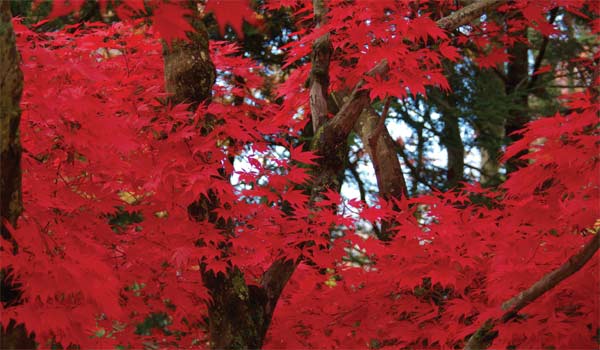Thanks for Asking
Q. I have a Japanese Maple who’s roots has grown through the drainage hole in a terracotta pot and rooted into the ground. I’m not quite sure what to do next to fix things.
A. This is not as much of a problem as it might seem. Your Japanese Maple is root bound. I suspect it was either planted in to small of a container to begin with or it has been in the same container for a very long time. Either way now and for the next month, is an excellent time to remedy the situation. The solution is quite simple, push the container over as far as you can and cut the root off at the drainage hole. Now, you have two options, root prune and replant the Maple in the same container or transplant it into a larger pot. Containerized maples, azaleas, camellias, gardenias and many others are transplanted once every twenty-four to thirty-six months as a standard practice. This prevents them from becoming root bound and declining. Root pruning allows you to keep a plant in the same container indefinitely by creating room for new roots while transplanting allows you to increase the container size gradually over time. With either technique, you’ll be cutting the root ball and this makes people very, very nervous, as they’re concern about permanently damaging the plant. This is not the case unless you grossly over due it. As plants become root bound, they develop a thick and tightly bound rootball in the shape of the container. You need to break this pattern by severing the roots by making several slices, two to four inches deep into the root ball with a steak knife, your pruning shears or a pruning saw. Depending on the size of the root ball, you might make four to twelve slices and don’t forget the bottom. With root pruning, you physically slice, trim or cut away two to six inches from the sides of the root ball and four to eight inches off the bottom. With both techniques, you then add fresh potting soil to fill the vacant space and complete the transplanting project.
Q. Will Roundup kill a mature tree? I‘ve a large, old peach tree and use Roundup for weed control under it.
A. It’s highly unlikely that Roundup would negatively affect an established Peach or any other dark color trunk ornamental plant. Roundup is a non-selective herbicide that is only absorbed through the chlorophyll or green portion of a plant that would be the leaves, stems, twigs, branches and trunk but not the roots. A few plants that you need to be careful with the spray drift of Roundup are roses, camellias, crape myrtles, and the basal growth around trees like a redwood. Established ornamental plants effective by the spray drift don’t die; instead, they produce an abundance of twisted and distorted growth. The plant returns to normal in the following year. It should also be noted that there are no benefits from spraying Roundup on bare ground.

Leave a Reply